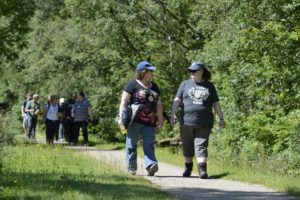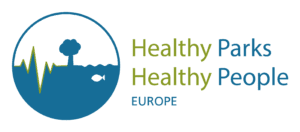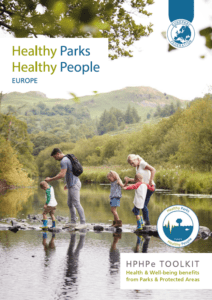In 2018, EUROPARC launched its one of a kind toolkit “Health and Well-being benefits from Parks and Protected Areas”. We are happy to now present an updated version of this toolkit: the Healthy Parks Healthy People Europe toolkit.
The toolkit
To give those managing Parks and Protected Areas the tools to make their areas natural health centres, EUROPARC now proudly presents an updated version of its toolkit “Health and Well-being Benefits from Parks and Protected Areas” which includes the HPHPe programme. It was launched during our “Nature is Good Medicine” Webinar. This Healthy Parks Healthy People Europe Toolkit gives practical guidance for those managing Parks and Protected Areas on how to set up the programme in their area.
Download the Toolkit here
How can it help you?
The HPHPe Programme is structured under 4 pillars: Making the Case, Building Partnerships, Developing Capacity and Practice, and Connecting People and Nature. The toolkit follows the same design and for each pillar, a range of tips, tools, information and inspiration is provided. The HPHpe check list is a key part of this toolkit. Through the check list, Parks and Protected Areas staff are guided to develop goals and actions across 7 areas of work. The toolkit is designed to encourage you to consider your current practice and help you think about:
- How best to plan, manage and promote your sites to a wider range of people to improve their general health and well-being
- How to link your sites to the health sector
The checklist is a special annex to the toolkit and can be downloaded separately.
You can download the Check list here
How it is organised
There are 4 “chapters”, corresponding to the 4 pillars of the HPHPe programme. Each chapter first “sets the scene“: here it is explained what is needed for the programme to be a success. Then, “Key Messages” corresponding to the pillar are presented. This is followed by case studies that highlight best practice examples from different countries in Europe. Each chapter then ends with the HPHPe Check list, where it is summarized exactly what needs to be done to reach to goal corresponding to the pillar.
The HPHPe Check list is also available as a stand-alone Annex, summarizing all you need to know to start your HPHPe Programme.
Through evidence based solutions and practical examples, the HPHPe toolkit gives those managing and working in Parks and Protected Areas the tools to turn their Parks into natural health centers.

Participants on a Branching Out course at Clyde Muirshiel Regional Park, August 2012
©Lorne Gill/SNH
Nature is good for your health!
The COVID-19 Pandemic has caused a run on natural spaces, turning the spotlight on long-standing challenges for the management of these places resulting from growing visitor numbers, problematic behaviour, and conflicts between different user groups. However, the pandemic has also highlighted how important these places are from a health perspective and that we need to invest in the provision and planning of these places in dealing with the pandemic. Through the adaption of the HPHPe programme and with this toolkit, EUROPARC seeks to ensure that:
- More of Europe’s Parks and Protected Areas providing well managed, accessible facilities and engaging target groups in health- promoting activities.
- More policy, practice and partnership working to maximise the potential of Europe’s Parks and Protected Areas as key assets for improving public health and well-being
and reducing health inequalities. - More people from all backgrounds enjoying the health benefits of connecting with nature and supporting the case for better protection, restoration and further investment in Europe’s Parks and Protected Areas.
Let’s make the most of our natural heritage! Join the programme, implement the toolkit and establish projects tailored to your Park or Protected Area’s needs and circumstances.
 This toolkit was produced by the EUROPARC Federation and the members of the Healthy Parks Healthy People Europe Commission. It was designed by Bárbara Pais.
This toolkit was produced by the EUROPARC Federation and the members of the Healthy Parks Healthy People Europe Commission. It was designed by Bárbara Pais.
